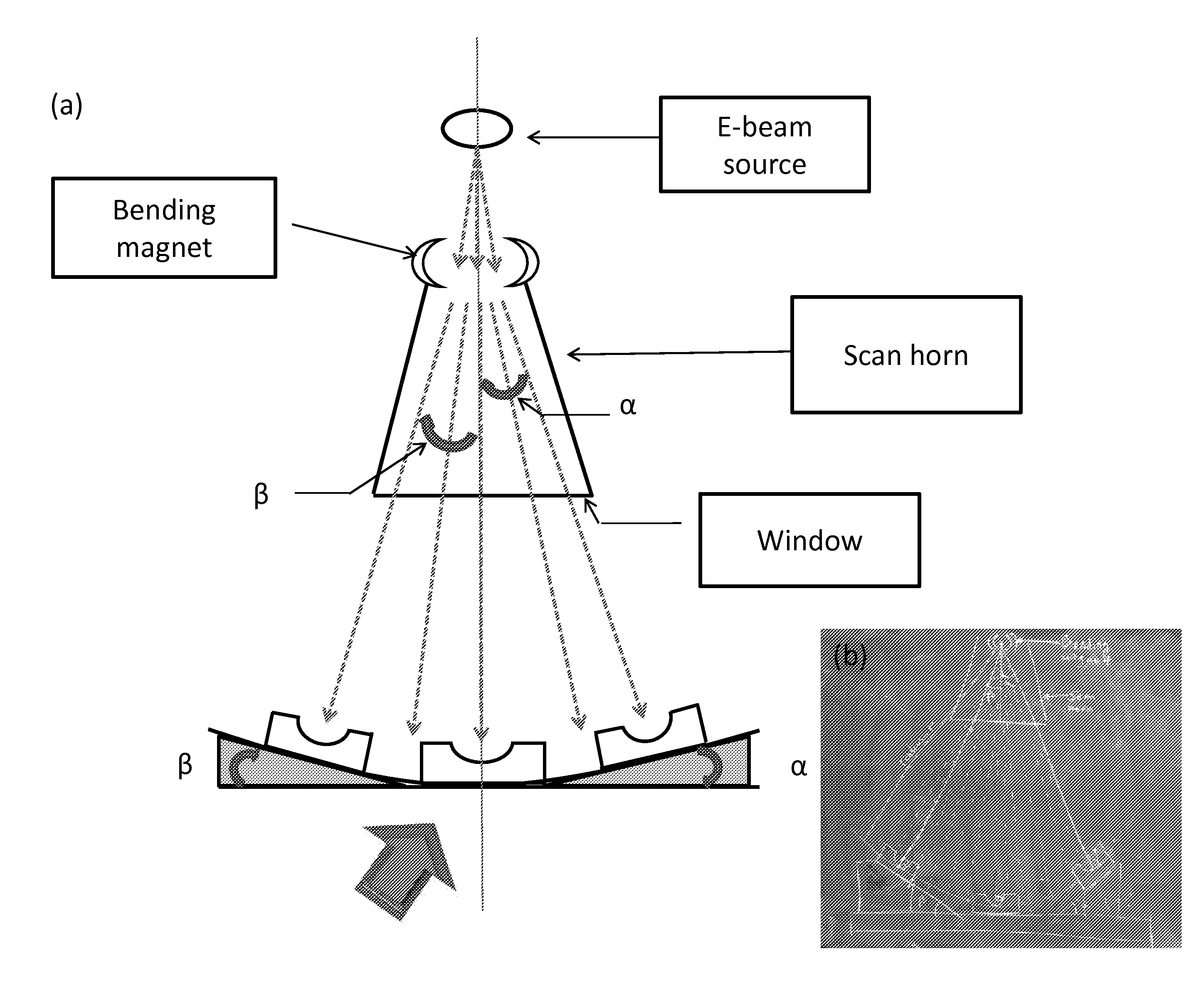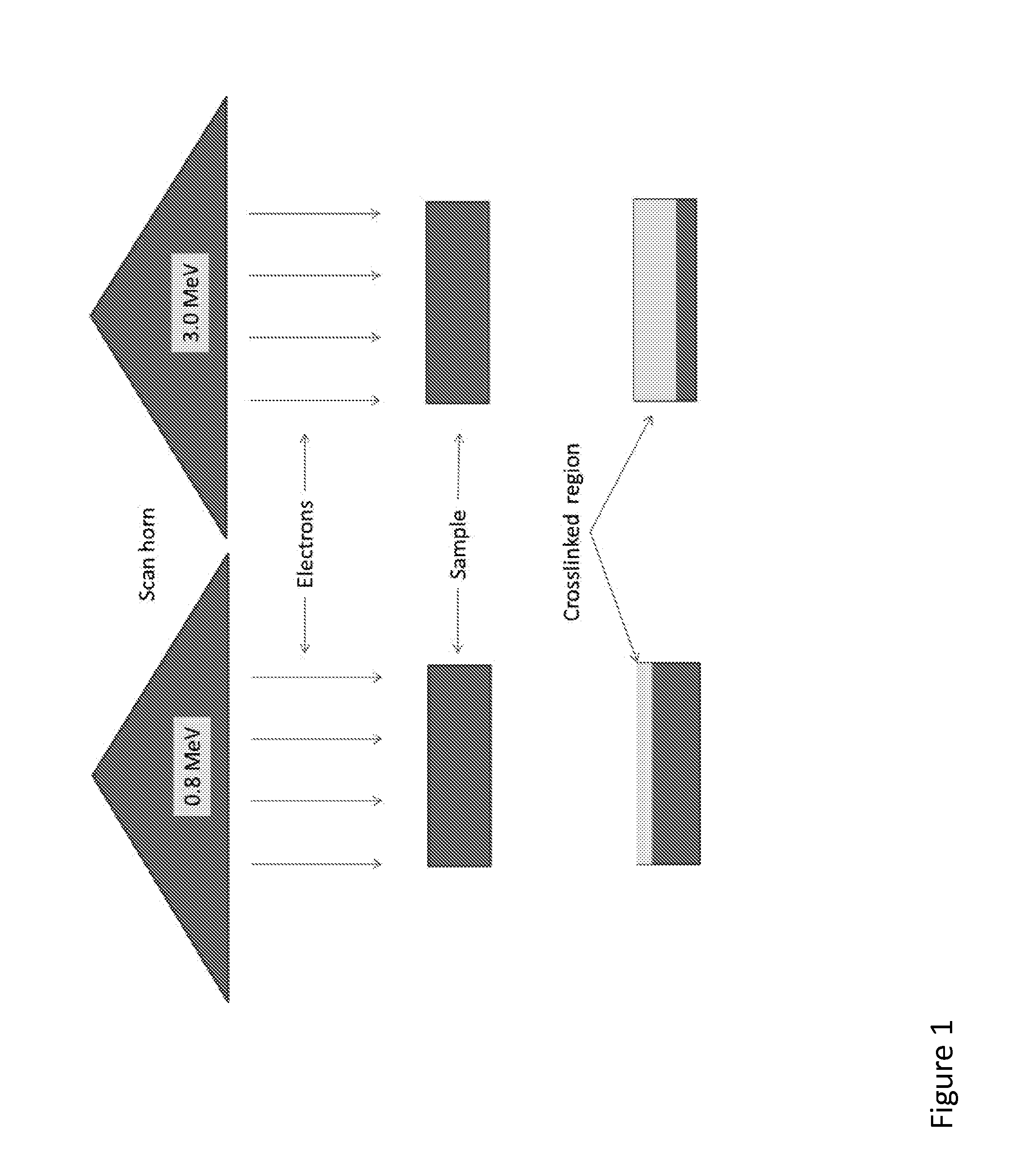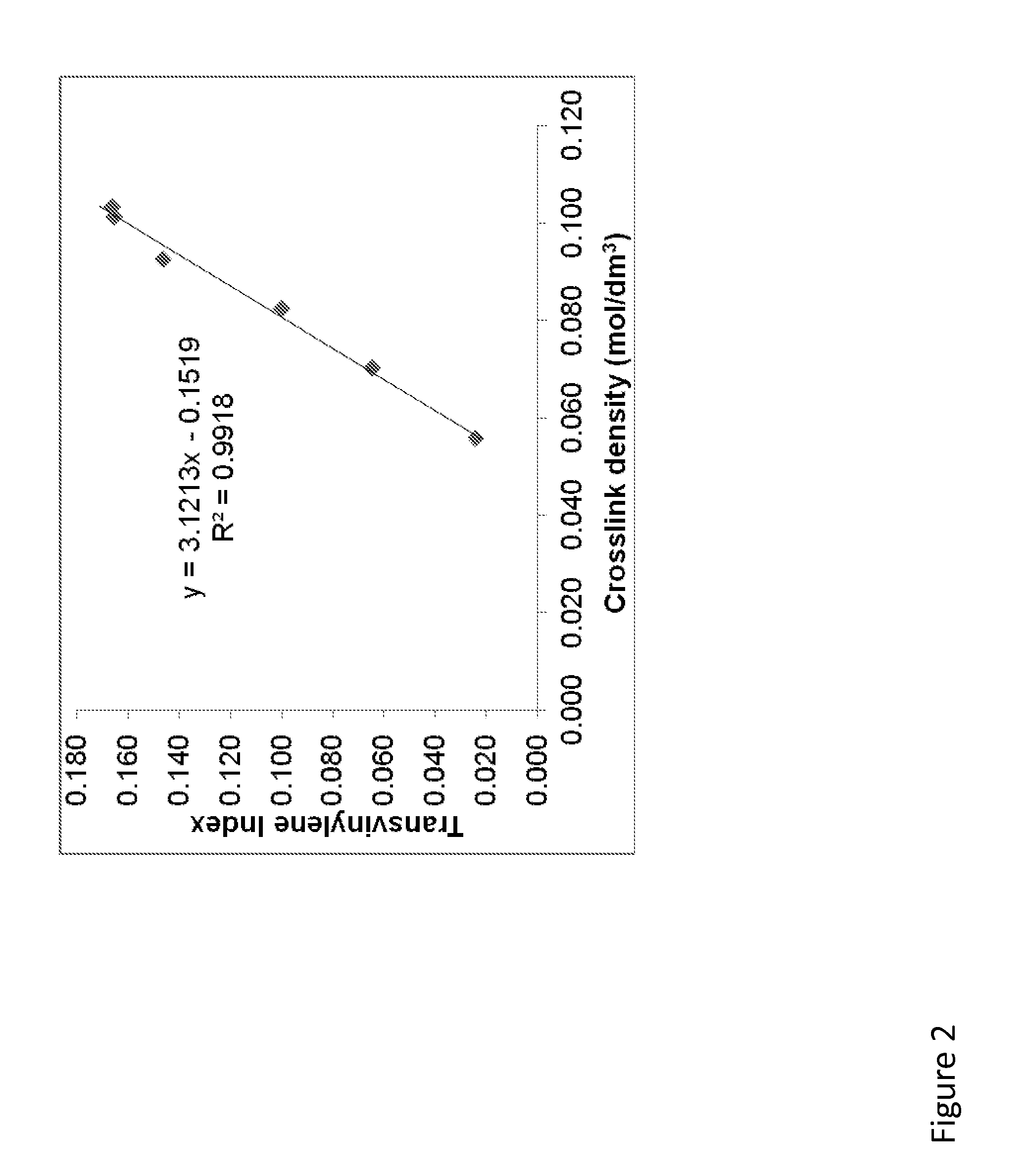Antioxidant-stabilized joint implants
a technology of antioxidant stability and joint implants, which is applied in the field of making wear resistant polymeric materials, can solve the problems of not revealing the method of making highly oxidation resistant polymeric materials by antioxidants, not revealing the information of uhmwpe formulations protected against oxidation in the long term nor one, and not revealing the information of antioxidant-stabilized materials. , to achieve the effect of improving mechanical properties and high wear resistan
- Summary
- Abstract
- Description
- Claims
- Application Information
AI Technical Summary
Benefits of technology
Problems solved by technology
Method used
Image
Examples
example 1
Irradiation of Vitamin E-Blended UHMWPE Using Low Energy Electrons without Shielding
[0245]Medical grade GUR1050 UHMWPE (Orthoplastics, UK) resin flakes were blended with vitamin E. Vitamin E-blended UHMWPE (with 0.1 wt. % Vitamin E) was compression molded into pucks, then machined into rectangular blocks (20×30×10.5 mm). Three of each block was irradiated by placing on a belt under the electron beam and conveying the samples back and forth under the beam. The samples were placed with their 10.5 by 30 mm side normal to the incident beam. The blocks were irradiated with electron beam energies of 0.8 MeV, 1.2 MeV, 1.6 MeV and 2.4 MeV to a total dose of 150 kGy. The dose rate was different in each case and ranged from 5 kGy / pass to 25 kGy / pass.
[0246]The blocks were cut in half along the length. A 150 microns-thick inner surface was microtomed and analyzed by FTIR. Spectra were collected as an average of 32 scans from the edge of the thin film that corresponded to the irradiated surface ...
example 2
Irradiation of Vitamin E-Blended UHMWPE Using Low Energy Electrons with Shielding
[0249]Medical grade GUR1050 UHMWPE (Orthoplastics, UK) resin flakes were blended with vitamin E. Vitamin E-blended UHMWPE (with 0.1 wt % vitamin E) was compression molded into pucks, then machined into rectangular blocks (20×30×10.5 mm). Three of each block was placed on a belt under the electron beam (Van-de-Graf generator, High Voltage Research Laboratory, MIT, Cambridge, Mass., USA) and were covered with flat shields machined from aluminum or copper at different thickness (see Table 3). The samples were conveyed back and forth under the beam. The samples were placed with their 10.5 by 30 mm side normal to the incident beam. The blocks were irradiated with electron beam energies of 0.8 MeV, 1.2 MeV, 1.6 MeV and 2.4 MeV to a total dose of 150 kGy. The dose rate was different in each case and range from 5 kGy / pass to 25 kGy / pass.
TABLE 3Surface depth, penetration limit, gradient depth and surfaceTVI aver...
example 3
Wear Testing of Vitamin E-Blended UHMWPE Irradiated with Low Energy Electrons
[0251]Medical grade GUR1050 UHMWPE (Orthoplastics, UK) resin powder were blended with vitamin E. Vitamin E-blended UHMWPE (0.1 or 0.2 wt %) resin powders were compression molded into pucks, then machined into cylindrical pins (9 mm diameter×13 mm length). The pins were irradiated by placing on a belt under the electron beam and conveying the samples back and forth under the beam incident on the flat surface of the pins (to be tested subsequently for wear when articulating against a metal counterface). The 0.1 wt % vitamin E-blended pins were irradiated with electron beam energy of 0.8 MeV to a total dose of 150 kGy and the 0.2 wt % vitamin E-blended pins were irradiated with electron beam energy of 0.8 MeV to a total dose of 200 kGy. The dose rate was different in each case (˜5 kGy / pass). One 0.1 wt % vitamin E-blended, consolidated UHMWPE block was irradiated with electron beam energy of 3.0 MeV to a total...
PUM
| Property | Measurement | Unit |
|---|---|---|
| Temperature | aaaaa | aaaaa |
| Temperature | aaaaa | aaaaa |
| Length | aaaaa | aaaaa |
Abstract
Description
Claims
Application Information
 Login to View More
Login to View More - R&D
- Intellectual Property
- Life Sciences
- Materials
- Tech Scout
- Unparalleled Data Quality
- Higher Quality Content
- 60% Fewer Hallucinations
Browse by: Latest US Patents, China's latest patents, Technical Efficacy Thesaurus, Application Domain, Technology Topic, Popular Technical Reports.
© 2025 PatSnap. All rights reserved.Legal|Privacy policy|Modern Slavery Act Transparency Statement|Sitemap|About US| Contact US: help@patsnap.com



